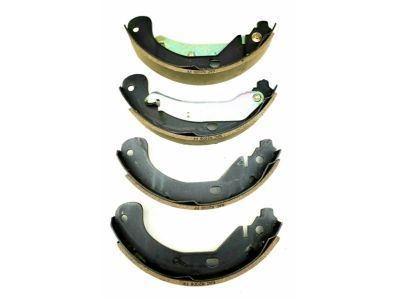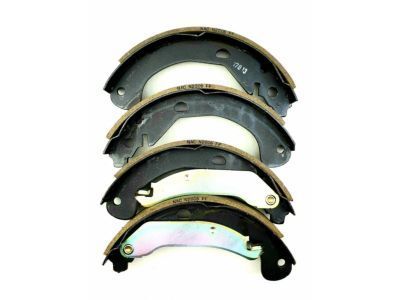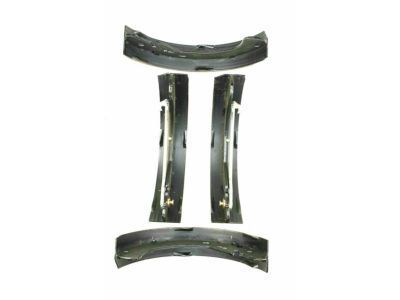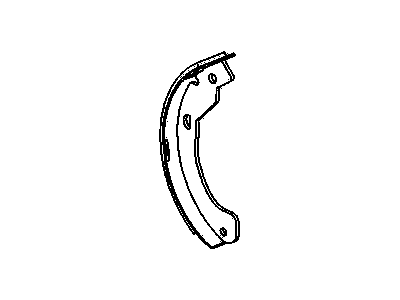
My Garage
My Account
Cart
Genuine Saturn Ion Brake Shoe
Brake Shoe Set- Select Vehicle by Model
- Select Vehicle by VIN
Select Vehicle by Model
orMake
Model
Year
Select Vehicle by VIN
For the most accurate results, select vehicle by your VIN (Vehicle Identification Number).
2 Brake Shoes found
Saturn Ion Brake Shoe
Brake Shoe of Saturn Ion vehicles are part of the drum-brake assembly involved in creating sufficient friction for the vehicle to come to a standstill. These shoes which have fitted with the brake lining rub against the inner periphery of the drum when the brake is applied as this applies force on it, in order to slow down or stop it. Sometimes incorporated in the design is self-adjuster mechanism for regulation of the shoe to drum clearance for effectiveness during use. Although the Saturn Ion may employ other varieties of brake shoes, the two broad categories are the non-servo leading-trailing arrays and the duo-servo arrangements. The duo-servo style improves on the braking force because it is self-generating; the force is applied to the drum as the drum rotates. The brake shoes need to be inspected and cleaned/maintained frequently, because the wear, contamination, or damage them can directly affect the braking functionality of the vehicle and need timely replacement for the cause of safety usage of the vehicle.
Each OEM Saturn Ion Brake Shoe we offer is competitively priced and comes with the assurance of the manufacturer's warranty for the part. Furthermore, we guarantee the speedy delivery of your orders right to your doorstep. Our hassle-free return policy is also in place for your peace of mind.
Saturn Ion Brake Shoe Parts Questions & Experts Answers
- Q: How to remove the Brake Shoe on Saturn ION?A:First, unbolt the wheel hub bolts, lift the back end of your car, set up jackstands right, and block the front wheels to keep the car from rolling. Release the parking brake and remove the wheel. Pull the spring off the brake adjuster, then detach the brake adjuster lever and adjuster. Using locking pliers, move the end of the shoe retractor spring toward the backing plate and away from the shoe, then disconnect the trailing shoe that's connected to the parking brake lever; pull down the shoe and lever away from the plate. Pull the retractor spring up and take the leading shoe off from the backing plate, before removing the shoe retractor spring. Press down the cable end tab, then turn the cable end lever off to take out the trailing shoe and parking brake lever. Wipe the backing plate clean with brake cleaner. Also add a thin layer of brake grease to the surface where the shoes touch. Insert the socket extension and hammer to fix the center of the retractor spring where it screws to the backing plate. Put the new front brake shoe in place, and you're ready. Gently couple the parking brake cable to the brake release lever and attach the freshly mounted trailing shoe and lever. Wipe off and grease the threads of the adjuster. Reinstall it between the shoes, then attach the adjuster lever and its spring, adjusting the shoes while holding the lever up, turning the star wheel until the drum can slide easily over the shoes. Examine the drum before installation to find cracks, markings, deep gouges, and rough areas. If you cannot fix these with sandpaper, take the drum to an auto repair shop for surface work. Put the brake drum onto the axle flange, hit the brake pedal a few times, then rotate the drum yourself and listen for the shoes rubbing along the innersides; adjust the star wheel to stop the rustling sounds. Attach the wheel and lug nuts, let the car lower itself, and tighten the lug nuts to their correct force level. Keep making forward and backward stops while adjusting the parking brake until the brake pedal feels right, then inspect the brakes' performance before you drive.












